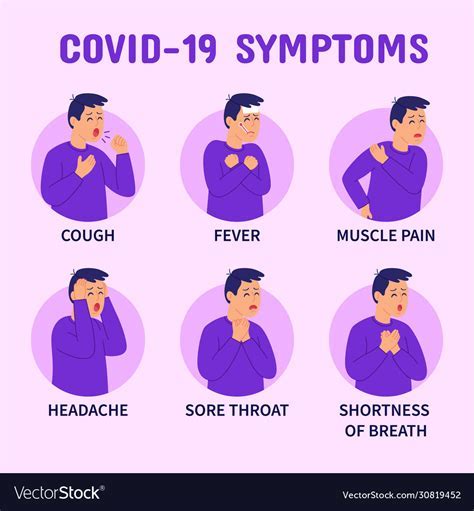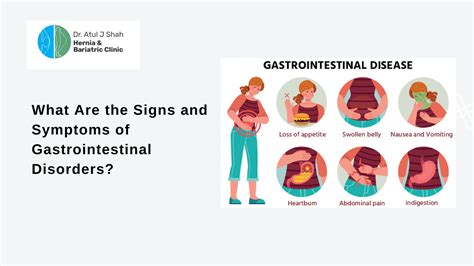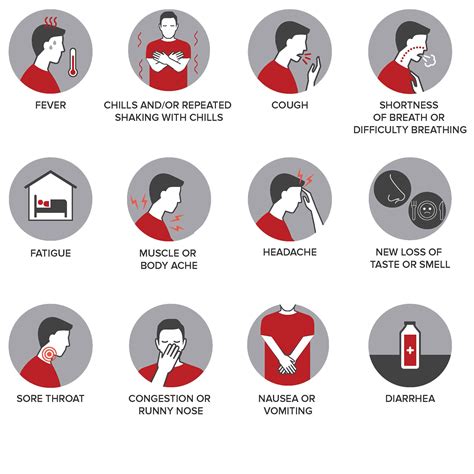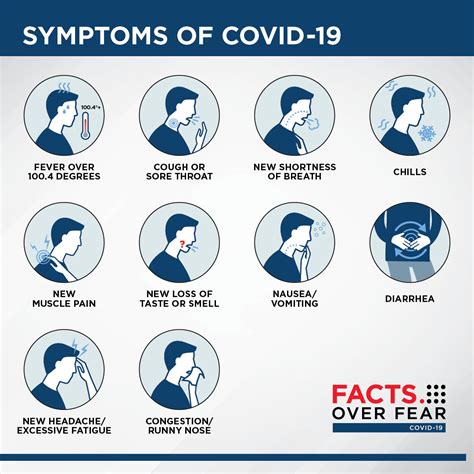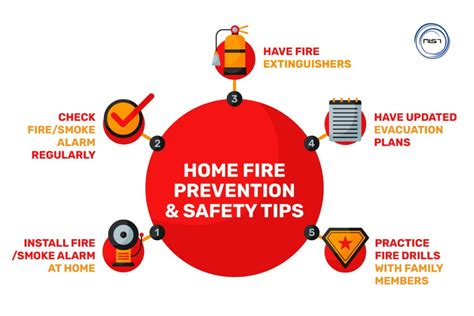The COVID-19 pandemic has brought about a significant shift in the way we live, interact, and prioritize our health. As the virus continues to evolve, it's essential to stay informed about the signs and symptoms that may indicate a COVID-19 infection. Recognizing these signs early on can help individuals take prompt action, seek medical attention if necessary, and prevent the spread of the virus to others. In this article, we'll delve into the 7 COVID signs that you should be aware of, exploring their characteristics, severity, and what you can do if you experience them.
The importance of identifying COVID-19 signs cannot be overstated. Early detection allows for timely intervention, which can significantly improve outcomes and reduce the risk of complications. Moreover, being aware of these signs can help you make informed decisions about your health, such as when to self-isolate, seek testing, or consult with a healthcare professional. As we navigate this new reality, it's crucial to prioritize our health and the health of those around us.
COVID-19 can manifest differently in various individuals, and its signs can range from mild to severe. While some people may experience no symptoms at all, others may develop severe respiratory issues that require hospitalization. The 7 COVID signs discussed in this article are not exhaustive, but they are among the most common and critical indicators of a potential COVID-19 infection. By understanding these signs and taking proactive steps, we can work together to mitigate the spread of the virus and protect our communities.
Introduction to COVID-19 Signs
The COVID-19 signs can be categorized into several groups, including respiratory, systemic, and gastrointestinal symptoms. Each of these categories encompasses a range of signs that can vary in severity and duration. It's essential to recognize that some individuals may experience a combination of these signs, while others may exhibit only one or two. By familiarizing yourself with these signs, you can take the first step towards protecting your health and the health of those around you.
Respiratory Signs
Respiratory signs are among the most common indicators of a COVID-19 infection. These signs can include:
* Coughing: A dry or wet cough can be a sign of COVID-19, especially if it's accompanied by other respiratory symptoms.
* Shortness of breath: Difficulty breathing or feeling winded even when sitting still or engaging in light physical activity can be a sign of COVID-19.
* Chest tightness: A feeling of tightness or pressure in the chest can be a symptom of COVID-19, especially if it's accompanied by coughing or shortness of breath.
These respiratory signs can range from mild to severe and may worsen over time if left untreated.
Systemic Signs
Systemic signs are those that affect the body as a whole, rather than being limited to a specific area or system. These signs can include:
* Fever: A high temperature, usually above 100.4°F (38°C), can be a sign of COVID-19.
* Fatigue: Feeling extremely tired or weak, even after resting or engaging in light physical activity, can be a symptom of COVID-19.
* Headache: A severe or persistent headache can be a sign of COVID-19, especially if it's accompanied by other systemic symptoms.
These systemic signs can be non-specific, meaning they can be caused by a variety of conditions, not just COVID-19.
Gastrointestinal Signs
Gastrointestinal signs are less common than respiratory or systemic signs but can still be an indicator of a COVID-19 infection. These signs can include:
* Nausea and vomiting: Feeling queasy or vomiting can be a sign of COVID-19, especially if it's accompanied by other gastrointestinal symptoms.
* Diarrhea: Having loose or watery stools can be a symptom of COVID-19, especially if it's accompanied by other gastrointestinal signs.
* Abdominal pain: Experiencing pain or discomfort in the abdominal area can be a sign of COVID-19, especially if it's accompanied by other gastrointestinal symptoms.
These gastrointestinal signs can be uncomfortable and may worsen over time if left untreated.
Other COVID-19 Signs
In addition to the signs mentioned above, there are several other COVID-19 signs that you should be aware of. These include:
* Loss of appetite: Feeling less hungry than usual or experiencing a decrease in appetite can be a sign of COVID-19.
* Sore throat: Experiencing pain or discomfort in the throat can be a symptom of COVID-19, especially if it's accompanied by other respiratory signs.
* Runny nose: Having a runny nose or stuffy nose can be a sign of COVID-19, especially if it's accompanied by other respiratory symptoms.
* Muscle or body aches: Experiencing pain or discomfort in the muscles or body can be a symptom of COVID-19, especially if it's accompanied by other systemic signs.
What to Do If You Experience COVID-19 Signs
If you experience any of the COVID-19 signs mentioned in this article, it's essential to take prompt action. Here are some steps you can take:
* Self-isolate: Stay away from others to prevent the spread of the virus.
* Seek testing: Get tested for COVID-19 to confirm whether you have the virus.
* Consult with a healthcare professional: Reach out to a healthcare professional for guidance on how to manage your symptoms and prevent complications.
* Practice good hygiene: Wash your hands frequently, wear a mask, and avoid close contact with others to prevent the spread of the virus.
Prevention and Protection
While there is no surefire way to prevent COVID-19, there are several steps you can take to reduce your risk of infection. These include:
* Getting vaccinated: Vaccines can help protect against COVID-19 and reduce the risk of severe illness.
* Practicing good hygiene: Wash your hands frequently, wear a mask, and avoid close contact with others to prevent the spread of the virus.
* Avoiding close contact: Stay at least 6 feet away from others to reduce the risk of transmission.
* Staying home when sick: If you're feeling unwell, stay home to prevent the spread of the virus to others.
Conclusion and Next Steps
In conclusion, recognizing the 7 COVID signs is crucial for taking prompt action and preventing the spread of the virus. By understanding these signs and taking proactive steps, we can work together to mitigate the impact of COVID-19 and protect our communities. If you experience any of the COVID-19 signs mentioned in this article, don't hesitate to reach out to a healthcare professional for guidance and support.
We invite you to share your thoughts and experiences with COVID-19 in the comments below. Have you or someone you know experienced any of the COVID-19 signs mentioned in this article? What steps did you take to manage your symptoms and prevent complications? By sharing your story, you can help others who may be going through a similar experience.
What are the most common COVID-19 signs?
+
The most common COVID-19 signs include fever, cough, shortness of breath, fatigue, headache, and sore throat.
How can I prevent COVID-19?
+
You can prevent COVID-19 by getting vaccinated, practicing good hygiene, avoiding close contact with others, and staying home when sick.
What should I do if I experience COVID-19 signs?
+
If you experience COVID-19 signs, self-isolate, seek testing, consult with a healthcare professional, and practice good hygiene to prevent the spread of the virus.
